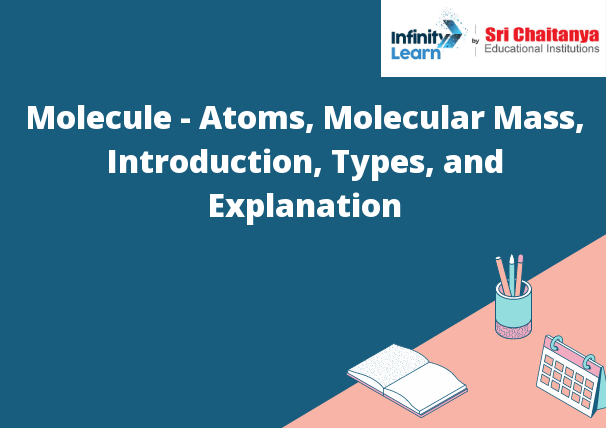Table of Contents
Introduction to Molecule:
A molecule is a group of atoms held together by chemical bonds. The atoms in a molecule are held together by chemical bonds. The type of molecule and the atoms it contains can be determined by its chemical formula.

Atoms and Molecules
Atoms are the smallest particle of an element that has the chemical properties of that element. Elements are pure substances that cannot be broken down into other substances.
Molecules are two or more atoms bonded together. The atoms in a molecule can be the same element or different elements.
Molecular Mass
The molecular mass is the sum of the atomic masses of the atoms that make up the molecule.
Water Molecule
A water molecule is made up of two hydrogen atoms and one oxygen atom. The atoms are held together by covalent bonds. Two hydrogen atoms surround the oxygen atom, and an electron surrounds each hydrogen atom. The water molecule is polar, meaning that the electron density is not evenly distributed. The oxygen atom has a slightly negative charge, and the hydrogen atoms have a slightly positive charge. This polarity allows water molecules to interact, forming hydrogen bonds.
Polar Molecule
A polar molecule is a molecule that has a permanent, unequal distribution of electric charge. The molecule has a positive end and a negative end. The positive end is called the “positive pole,” and the negative is called the “negative pole.”
ATP Molecule
Adenosine triphosphate (ATP) is an organic molecule produced in the body and is involved in many cellular processes. ATP is a nucleoside triphosphate, which means that it consists of a base (adenosine), a sugar (ribose), and three phosphate groups. The phosphate groups are attached to the base and sugar in a specific order, and this order is what differentiates ATP from other nucleoside triphosphates.
ATP is produced when the energy-rich molecule adenosine diphosphate (ADP) is converted into ATP. The enzyme ATP synthase catalyzes this conversion. The energy released by converting ADP into ATP is used to power many cellular processes, including muscle contraction, the transport of molecules across membranes, and the synthesis of new proteins.
ATP is also a signaling molecule. When it is released from a cell, it can bind to receptors on the surface of other cells, initiating a signaling cascade that results in the activation of specific genes.
Biological Molecules
Biological molecules are the molecules that are necessary for life. These molecules include DNA, RNA, proteins, and lipids.
Also Read:
NCERT Solutions for Class 9 Science
NCERT Exemplar Solutions for Class 9 Science



